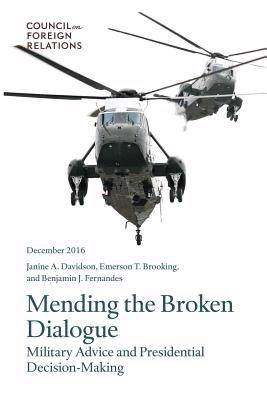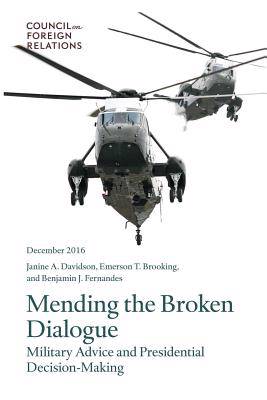
- Afhalen na 1 uur in een winkel met voorraad
- Gratis thuislevering in België vanaf € 30
- Ruim aanbod met 7 miljoen producten
- Afhalen na 1 uur in een winkel met voorraad
- Gratis thuislevering in België vanaf € 30
- Ruim aanbod met 7 miljoen producten
Mending the Broken Dialogue
Military Advice and Presidential Decision-Making
Janine a Davidson, Emerson T Brooking, Benjamin J FernandesOmschrijving
As commander in chief of the armed forces, the president of the United States bears great responsibility in determining when and how to use military force. To make such decisions, the president requires clear understanding of the risks, costs, and likely outcome of a military intervention. Because many presidents and senior civilian appointees lack military experience, they rely on senior military advisors to provide viable, realistic, and timely advice to inform critical decisions. Unfortunately, what the military leadership provides is often not what presidents are looking for.
Whereas civilians expect a collaborative dialogue in which multiple options are presented to them over a short period of time, military officers are taught to deliver their "best military advice" only after developing a detailed plan. Developing such a plan takes longer than civilians anticipate, and this process can be stymied when presidents and their advisors are unable to provide the sort of detailed guidance that the military expects. Meanwhile, the president cannot determine the best guidance without first understanding the costs, risks, and benefits of each potential option. This chicken-and-egg dilemma is a perennial feature of civil-military decision-making.
Although friction often frustrates civil-military relations, it is an inevitable and important part of the policymaking process. The system breaks down when there is too much friction or too little: when civilian and military leaders descend into open conflict or when one side acquiesces to the other and embraces groupthink. The system works best when both sides in the civil-military dialogue are able to speak candidly in an environment that fosters empathy and empowerment.
Specificaties
Betrokkenen
- Auteur(s):
- Uitgeverij:
Inhoud
- Aantal bladzijden:
- 74
- Taal:
- Engels
Eigenschappen
- Productcode (EAN):
- 9780876096918
- Verschijningsdatum:
- 1/11/2016
- Uitvoering:
- Paperback
- Formaat:
- Trade paperback (VS)
- Afmetingen:
- 152 mm x 229 mm
- Gewicht:
- 108 g

Alleen bij Standaard Boekhandel
Beoordelingen
We publiceren alleen reviews die voldoen aan de voorwaarden voor reviews. Bekijk onze voorwaarden voor reviews.











